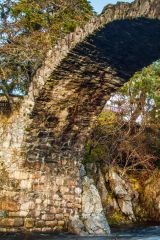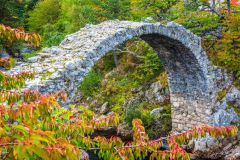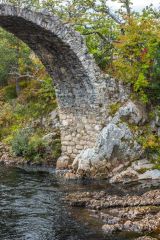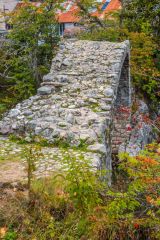
The bridge was funded by Brigadier-General Alexander Grant of Grant (1679-1720), who paid £100 to mason John Niccelsone (Nicholson) to create what is the oldest known stone bridge in the Highlands.
Grant had a long military career and also served as an MP for Inverness-shire in the Scottish Parliament of 1703-1707 where he was one of the commissioners charged with arranging the 1707 Union of the crowns with England and was subsequently an MP in the united British Parliament five times. He also served as the Constable of Edinburgh Castle and is credited with suppressing outlaws and robbers in the Highlands following the 1715 Jacobite Rebellion.

As for the bridge, all that remains is a single span, arcing high into the air across the swiftly rushing river below. The parapets were washed away by floods in 1839 leaving a slender arch that would be terrifying to cross even if it were not carefully protected from access.
There is a viewing area at street level above the bridge and steps down the bank of the river to a lower viewing platform almost at water level. You can also get a very good view of the bridge from the modern road bridge immediately to the east. There is a footpath along the riverbank on the northern end of the bridge where you can catch glimpses of the bridge approach through the trees.
There is free parking in the village parking area a short walk south from the bridge, on the B9153.












